|
Words by: Dr. Sindhuja Devanapally Edited by: Dr. Lucie Yammine, Dr. Laurie Herviou, Dr. Conchi Izquierdo  Recently, INet-NYC hosted an informative and timely career development seminar series led by professional development coach, Dr. Valentina Schneeberger. By day, Valentina is an Associate Director of Market Research at Sanofi, but her other passion lies in coaching PhD-holders for career success. After a PhD in cancer biology at University of South Florida and a postdoctoral research career in Memorial Sloan Kettering, New York, Valentina transitioned out of academics into the world of life-sciences consulting at Charles River Associates. She sets an example for how scientists with expertise in biology can still contribute to career sectors most academics are unfamiliar with. In this four-part webinar series, Valentina exemplified the plethora of opportunities there are for anyone with a PhD degree, outside of academia. As part of the series, I summarize a list of actionable steps that Valentina provided for career exploration and successfully landing a job. Part 1: How to plan for your post-PhD career There are many opportunities that exist for postdocs outside of an academic career. Slide from Valentina Schneeberger’s talk. Content credit: Christie Ojiaku, PhD. While the academic work environment is the most familiar for many of us, many individuals realize along the way that perhaps other professional directions are better to explore. However, the problem arises when one does not know where to begin. Through sequential steps broadly divided into three phases, Valentina used this seminar to provide the attendees with a guide to getting started on the career exploration path: i) Identify interests and priorities through self-assessment: Valentina suggests self-introspection and reflection on personal priorities in addition to examining your professional interests. Combining these aspects can help you develop a list of must-haves you can focus on during a career search. You can prioritize in order of importance these factors: intellectual stimulation, income level, work culture, flexibility in work hours, location of the job and amount of social interaction and travel. There are several self-assessment resources that exist, such as the Yale self-assessment worksheet and the more popular myIDP by Science Careers. These resources help you expand your thoughts to imagine a career you previously never considered. Valentina emphasized that one must not set their limited expectations of oneself to inhibit exploring with an open mind when it comes to career exploration. ii) Research the career options that align with your interests and priorities: As a PhD-holder, there are many ways we can delve deeper into finding roles that match our interests. All of them somehow relate to professional networking. Some examples include:
iii) Design an approach to explore the career option of your interest: If you are in the first step of transitioning out of academia, job preparation can be an almost full time job. Yet, it is a necessary step to successfully make the career switch. In this phase, Valentina strongly suggests committing a time chunk dedicated to job searching. This means that clear boundaries are set and expectations are met while balancing it with your day job. A schedule of tasks needs to be drafted to check off the list as part of necessary job skills preparation or for the job interview. Finally, you need to simply execute this list of tasks and keep yourself accountable as you track your progress towards the new job applications. As you may notice, career exploration demands a good amount of time and energy from you but for a favorable outcome, you would need to have a clear channel of communication with your PI. This begins with setting your expectations with your PI on the progression of your publication and your timeline of exit from the lab. At the same time, Valentina suggests communicating your future needs about aiming for a different career path while balancing current expectations from your PI and delivering results within your current role as a postdoc. How to network for success
In this webinar, Valentina showed the importance of networking towards building chances for a career opportunity. She advised that successful networking significantly improves your ability to be hired and provides a series of steps to effectively network.
0 Comments
Interview and words by Dr. Rupali Gund and Dr. Pavel Ryzhov Edited by Dr. Rinki Saha, Dr. Laurie Herviou and Dr. Conchi Izquierdo Social media is a great technological gift for our generation that allows new ways of communicating and expressing one’s ideas with a wider audience in various formats. For our second session in the science communication series, INet-NYC interviewed Dr. Pavel Ryzhov who is the creator of an online platform and Youtube channel called Biofilm News and Biofilm Podcasts. This platform covers the latest news in healthcare and life sciences and interviews experts in the biotech industry. Here are the excerpts from the conversation with Dr. Ryzhov. 1. Please share your scientific journey and path to becoming a science communicator. I had a couple of different transition points in my career trajectory. I’m originally from Russia and after graduating high school there, I came to the US in 2010 to attend community college in San Diego, California. After that, I went to Germany to continue my undergraduate studies in a little town called Rheinbach, where I got my Bachelor’s in Applied Biology. I went back to San Diego for my PhD programme in Sanford Burnham Prebys Medical Discovery Institute where I worked in the membrane protein NMR field for several years and I graduated in Feb 2020. I moved to the East Coast in the fall of 2020 to start my current job as an Application Scientist at Applied Photophysics. I believe my communication skills definitely helped me excel in my career. For my current job, I communicated with the company’s representatives over many years as part of my networking and apply my communication skills in this role to interface with the scientists, our existing and prospective new customers and to share the new products that the company is making and troubleshoot if they are having issues using our instruments. 2. It’s great to see that you had an intercontinental work experience with multi-lingual team members and how effective communication helped you land in your current role. You have created Biofilm News, would you like to share what Biofilm News is and what inspired you to start this initiative? Thank you for bringing this up! The way to describe the inspiration behind Biofilm News is to say I watch a lot of youtube videos and I am inspired by watching various podcasts or people covering news and talking about the latest tech by developing movies. As a user of these virtual platforms, I was always curious about how to create such similar content. So during my PhD, I thought of creating some videos because I realized that there is not much content available exclusively for life science students. So, I started doing short videos on some of the topics that I used to read about on a daily basis. I had to put it on hold while I was trying to finish my PhD and when I got my current job. But this year I’m taking it rather more seriously and creating content for PhD students based on my own experience, interviewing people from the industry and covering biopharma industry news that I find interesting. 3. It is fascinating to see how you are using your past career experiences and communication skills to help the wider community of life sciences students navigate their scientific journey. Exactly, I feel PhD students can have tunnel vision and I'm the first to say I'm guilty of that because we're so focused on getting our research done. We do that at the expense of knowing the larger trends in the pharma industry or life science field as a whole. Finishing a Phd could be a daunting experience, so I believe sharing some advice with students as well as sharing some of the larger things that are going on in the industry is how I would like to help a younger group of scientists. 4. What kind of content are you developing for Biofilm News and where do you publish your work in social media? There are three things that I like to focus on- 1) talking about the latest news in the industry that I find myself either on Linkedin or elsewhere, 2) interview people from the biopharma industry to learn about their experiences, and 3) sharing my own PhD experience. As far as putting it out there, I put it on YouTube and occasionally I put it on some other outlets like LinkedIn, Facebook or other personal social media channels. 5. Did you take any special courses or training to develop videos or podcasts? What suggestions do you have for our audience if they want to start their own podcasts?
I believe that the best way to start is to actually look up youtube tutorials on selecting camera gear, formatting the podcast, editing, and publishing videos, and also there are resources on how to market your content. There is so much educational content that is completely free and available. That’s how I started. I also took "The Art of Science Communication" online course offered by the American Society of Biochemistry and Molecular Biology that helped me to learn how to present my research work to the lay audience. Also, I got many opportunities during my PhD to practice science communication by doing poster presentations and sharing my research progress to my lab peers, or by having casual conversations with my friends who are not from life sciences and responding to their questions about how vaccines work or about coronavirus, all of which helped me to hone my communication skills. 6. How do you balance your work with managing Biofilms? How much time/effort goes in developing this content? The short answer is it is hard. It's definitely a fine balancing act between the work that I do and this hobby, so I try to be creative and find ways to simplify making videos and minimize the time I spend on the individual project. Sometimes perfectionism comes in my way and I keep editing a video and never publish it because you are never satisfied with the final version. So, I like to streamline that process and make it as easy as possible. Sometimes I just publish and move on to the next one. I believe setting deadlines is important and sticking to the schedule helps me to continue developing my content. 7. Where do you see Biofilm News in the next few years? Are you open to collaborating with other scientists to contribute to Biofilm News? I am looking for a co-host for a specific iteration of my podcast where I discuss the latest news because it gets really boring talking to myself while discussing the news alone on a podcast. So I feel having somebody for a banter or exchange of ideas would be awesome. So anybody who might be interested can connect with me on LinkedIn. 8. Would you like to be a science communicator full time, or keep this as a hobby? It is an interesting question now that I’m thinking. I am doing science communication as an application scientist in a full time job, because my current role is all about communicating science effectively and I enjoy doing that a lot. And, my YouTube channel is just another outlet for that. I know I will be a Science Communicator for many years and my goal is to evolve and try to develop different kinds of content and reach a wider audience. 9. What advice do you have for those who want to begin their journey in becoming a science communicator? The best way to do that is just to start talking to somebody. I've done a lot of tutoring over the years that definitely helps with learning how to talk about complex topics that would make sense to another person. Consider taking some specific communication courses if you can. I think there are vast amounts of resources and tutorials that are available on YouTube or other platforms that are freely available that I explore to develop my content. I also use Davinci Resolve free software for video editing, Microsoft Powerpoint, Affinity Designer, Canva, and Adobe illustrator. I am happy to help and share some personal tricks, if somebody wants any advice from me. The entire team of INet NYC would like to thank Dr. Pavel Ryzhov for taking time to interact with us and sharing his exciting journey of becoming a science communicator. You can connect with Dr. Ryzhov via his LinkedIn if you want to collaborate or participate in Biofilm podcasts. To follow the latest healthcare/pharma news and interviews on Biofilm News, please subscribe to Dr. Ryzhov youtube channel here. INet-NYC launches the Series INet-NYC Recommends, where board members will share their favorite books, podcasts, movies, NYC restaurants and more to inspire you to make the most of your free time!
The series begins with our Administrative Manager Marta Collu's recommendation for the book "Why We Sleep" by author Matthew Walker, PhD. 1. What is the book about? Why did you decide to read it? Written by Matthew Walker, PhD, professor of Neuroscience and Psychology at UC Berkeley, this book is about the vital importance of sleep. Based on countless scientific evidence it is a 360-degree exploration of sleep, from how and why we sleep and dream, to the beneficial effects for our brain and body, and to the impact that insufficient sleep has in education, medicine, healthcare, and business. I opted to read it because it was recommended on a YouTube channel on healthy habits that I follow. 2. What did you already know about the book’s subject and what new things did you learn? I had the idea that a good night's sleep, both in terms of quantity and quality, is beneficial to our body and brain regeneration, as well as scientific knowledge of how sleep and dreams occur. However, after reading this book, sleep now appears much more complex and health-relevant than I thought. I was fascinated by the power of sleep in boosting our immune system, preventing cardiovascular and neurodegenerative diseases, and enhancing memory, learning and productivity. At the same time, I discovered how easily our life-style leads to daily sleep deprivation and how serious the implications are. 3. Share a quote from the book you liked. Why did this quote stand out? I found many, but I will share the one that put a smile on my face: “Should you feel drowsy and fall asleep while reading the book, unlike most authors, I will not be disheartened. [...] Knowing what I know about the relationship between sleep and memory, it is the greatest form of flattery for me to know that you, the reader, cannot resist the urge to strengthen and thus remember what I am telling you by falling asleep”. 4. Why would you recommend this book? If you want to broaden your understanding of this complex and vital function, I recommend reading this book. More importantly, I believe this reading makes us realize how often sleep is neglected in our society, and the repercussions are severe. It encourages everyone, especially in today's fast-paced environment, to think about how much (or how little) significance we place on sleep and to make a conscious effort to shift our personal and societal appreciation of it. The views and opinions expressed in this blog are those of the posts’ authors and do not necessarily reflect the official policy or position of INet-NYC. Any content provided by our bloggers or authors are of their opinion and are not intended to malign any religion, ethnic group, club, organization, company, individual or anyone or anything. Bloggers and authors have no conflict of interest to declare. Interview and words by: Dr. Rinki Saha Edited by: Dr. Laurie Herviou, Dr. Rupali Gund and Dr. Conchi Izquierdo 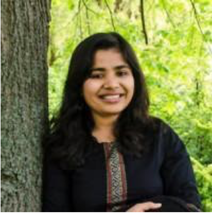 ‘One picture is worth ten thousand words.’ How many times you have thought if there was a diagram, I would have memorized this easily. Well, June is the month of effective science communication. We from INetNYC took this opportunity to launch our series where we will interview many science communicators from different backgrounds and different skill sets. This time we were lucky to interview the creator of Fuzzy Synapse – this platform explains various scientific topics in a fun and simple way. Fuzzy Synapse has covered various topics ranging from the theory of relativity while portraying the complex science behind microwave invention. 1. We would like to know the human behind the Fuzzy Synapse! I am Dr. Vinita Bharat, Neuroscientist at Stanford University. I finished my doctoral studies; being an International Max Planck Research School (IMPRS) Neuroscience student at European Neuroscience Institute, Goettingen, Germany. My research was focused on the exciting topic of how our brain learns and memorizes. Science has always been compelling to me, while doing my Ph.D. I understood the need of communicating science to the world. I started an online platform in 2017 called Fuzzy Synapse. With this platform, I create content to simplify complex scientific concepts in an easy and fun way. So, you can call me “the scientist who loves communicating science to broader audience.” 2. When did you illustrate something for science for the first time? Was there someone in particular who inspired you to start Fuzzy Synapse? I have always been keen on doodling; I would always love pictorially explaining myself any complex topic. I think visual illustration always makes a better impression on our minds. From our textbooks, we probably have forgotten many things, but some schematics are still in our minds. There is a very fun story that happened during my Ph.D which I would love to share. During those years, CRISPR was a new discovery, everyone in the scientific community was talking about it. I made some doodles explaining CRISPR technique. My friends and colleagues really liked it and encouraged me to post it on social media, and to my surprise, it really got a huge appraisal. That was kind of the starting point of my journey as a science communicator through Fuzzy Synapse. Fuzzy Synapse represented stem cell as "Swiss army knife” which basically holds the ability of multiple tools in one. To answer your second question, it’s very hard to pinpoint one artist as a role model given the variety of mediums people use to communicate science. From my initial days, Stempeers have given me great support and opportunity to grow my platform. I found amazing sci-comm artists through STEMPEERS. I love following and learning from each and every one’s art and way of science communication. To add a few more names, I enjoy science sketches, exemplary work from Dr.David Goodsell. Also, PHD comic series is something that makes me laugh every time.
3. Is there any exciting story behind the name Fuzzy Synapse? I want to give credit to my husband who coined this name for my platform. I think the connection between the world and science is fuzzy and being from a neuroscience background, connection means synapse. I think this name Fuzzy Synapse aligns very well with my interest and the mission of this platform really well. 4. The ratio between science communicators and scientists is not high: in your opinion, how should we tackle this issue? I think scientists should learn the art of communicating their science to the broader audience. Especially from this pandemic, we learned that we are not just fighting pandemic but also infodemic. Through science communication we should bring science and society closer. Describing the significance of your work without using jargon could be very difficult as we the scientists have no formal training in that. I think teaching effective science communication from the very start can help. I am working on curating a seminar series on effective science communication which might also help in this direction. 5. What software/applications are you using to work on your projects? When I started, I was simply using pen and paper to create illustrations. Now, I heavily use Procreate and Adobe illustrator to create all the artsy stuff. These softwares give more dimensions to my work but I feel the idea is the key. 6. How are you running the platform and how do you manage to balance your lab life and your passion side by side? I try to balance both sides. I aim to cover at least one scientific topic every week through Fuzzy Synapse. So far, I have covered around 170 topics through my art. I make sure to bring the science correctly, hence do my homework too before starting the idea. I also make a conscious effort to make my content more diverse and inclusive. Collaborating with amazing groups and individual contributors gives me a great opportunity to fine tune my ideas. I learned a lot in this whole process which has kept me motivated so far. I would say actually working in the lab brings a lot of ideas for Fuzzy Synapse. Let's say if I am running a Polymerase Chain Reaction (PCR) or working with stem cells, I think then to create illustrations on those topics. After a long day of work at the lab, thinking and creating these illustrations give me immense joy. I would say it’s hard keeping a balance between lab work and Fuzzy Synapse, but the oxytocin I get from this creation keeps me going. 7. What is the future for the platform Fuzzy Synapse? I am planning to launch a book series that will cover more scientific topics in greater detail. I am working on a book project called ‘draw your science’. Besides another ongoing series called “Draw your neuroscience” where I aim to make neuroscience fun and easy for all. I am aiming to soon launch a workshop series on effective science communication. I envision Fuzzy Synapse will be a collaborative platform for scientists and artists to collaborate. Be it through visual illustrations, art performances, podcasts etc., we will see an amazing amalgamation of both sides to communicate science. 8. What advice would you give to people who want to start with Science Communication? Just start, don’t complicate your thought process, don’t be hesitant. Please make sure to spread the right message through your content. It’s a learning process, so just put your ideas out. Collaborate with others in the field and keep learning and creating. To enjoy illustrations from Fuzzy Synapse follow her on Facebook , Instagram and twitter too! By Yue Liu (Edited by Tessa Barrett)
Sharpen Your Professional Writing Swordsmanship Writing in English is unquestionably one of the major challenges international students must conquer. Professional writing, especially scientific writing, is particularly challenging, due to the requirements for clarity, accessibility, and accuracy. The first step in becoming competent in professional writing is to sharpen your writing skills. But how can we do it given our tight schedules, limited funds, and intimidating academic requirements? The following is a range of options arranged by accessibility, depending on your skill level, from which international students can choose: Read Quality Materials on a Daily Basis Nobody can become a good writer without reading. A benefit of intensive reading is the broadening of our working vocabulary. Besides understanding every single word within various contexts, Monica Thorn, a very organized and encouraging English tutor at Hunter College, suggests comparing a group of related words such as synonyms and antonyms from a thesaurus every day. Personally, I have signed up to receive the Merriam-Webster Word of the Day. I also recommend an affordable and portable book, Merriam-Webster’s Vocabulary Builder, which is organized by word-building roots. Thorn also recommends devoting 15 minutes per day to reading quality materials, such as The New Yorker, The New York Times (many universities provide free access), Wired, The Economist, and so on. In addition to building vocabulary, Dr. Kate Gao (a scientific editor at Nature Communications) believes reading not only brings great pleasure but also inspires us to generate our own beautiful stories. Dr. Gao suggests reading several great writers to progressively internalize their ways of storytelling to develop one’s own unique writing style. Read and Analyze Well-written Scientific Articles We usually read scientific articles for research, but how often do we pay attention to their logic and sentence structure? Does the article present an engaging argument like telling a captivating story? Dr. Gao suggests reading well-written scientific articles and learning how to organize data logically, precisely, and compellingly. Moreover, closely comparing one’s first draft of a research paper with the final version will help us find the areas that need improvement. Get Free Assistance from the Reading and Writing Center at Your Institution Most institutions provide free materials and one-on-one tutoring for students to develop fundamental reading and writing skills through Reading and Writing Centers. I met Thorn at the Reading and Writing Center at Hunter College. However, the levels and styles of tutors are quite different, and it may take time to find a good match. In addition to tutoring, you can find many useful handouts and resource links on their websites. Take Writing Classes and Workshops for Free I have audited writing classes at my institute and learned how to compare various forms of literatures and write critical analyses. For professional science writing, most graduate schools provide free science writing workshops. In addition, we can also take online science writing classes, such as the Writing in the Sciences course offered by Stanford University, as recommended by Dr. Jun Tang (a postdoctoral scientist at Memorial Sloan Kettering Cancer Center). Dr. Tang strongly believes that non-native English speakers will become good writers with practice, and suggests reading good resources to absorb the language usage in one’s own writing, as well as writing regularly and revising intensively. Get Continuous Feedback from a Good Writer Dr. Tang also suggests finding a good and patient writer (a friend, an English tutor from a Reading and Writing Center, or a professional writer if you can afford it) to go through your writing (e.g. essays, research proposals, and cover letters). Continuous feedback is key to improving your writing skills. For example, I was very lucky to work with Jane Shmidt (a doctoral candidate in Comparative Literature at CUNY). Shmidt was very patient and scrupulous in examining my writing. I developed a better sense of logic and realized the importance of organizing the structure. Shmidt gave me two pieces of advice: 1) keep a daily journal to practice writing; and 2) have a reader relay a draft back to the writer, who will then know the parts that require clarification. Take More Advanced Writing Classes and Workshops If free resources such as Reading and Writing Centers, auditing classes, and taking online classes do not satisfy your craving for further improvement, there are many more classes and workshops available. Dr. Gao suggests the creative writing classes offered by the Gotham Writers' Workshop (https://www.writingclasses.com/) and the Santa Fe Science Writing Workshop (http://sciwrite.org/). Join Professional Organizations for Writers Dr. Joan Liebmann-Smith (a consulting writer and editor at Memorial Sloan Kettering Cancer Center) suggests joining organizations such as National Association of Science Writers, Science Writers in New York, American Association for the Advancement of Science, American Medical Writers Association, The New York Academy of Sciences, or any other organization related to your field. Hone Analytical Skills through Editing Dr. Liebmann-Smith also suggests forming or joining a reading/writing group to analyze and critique each member’s writing. For example, Jordana Lovett (a doctoral candidate at CUNY), who has always been passionate about scientific writing, finds the most satisfying means of improving her writing is to edit other people’s work. The critical reading and editing process trains her mind to write more effectively. “You don’t succeed as a scientist by getting papers published. You succeed as a scientist by getting them cited. … You succeed when your peers understand your work and use it to motivate their own…. Success, therefore, comes not from writing but from writing effectively.” ─Joshua Schimel Acknowledgement: I am very fortunate to know many great writers who are generous in sharing their valuable experiences with me: Dr. Kate Gao, Dr. Joan Liebmann-Smith, Jordana Lovett, Jane Shmidt, Dr. Jun Tang, and Monica Thorn.
By Yue Liu
|
Archives
May 2025
Categories
All
|
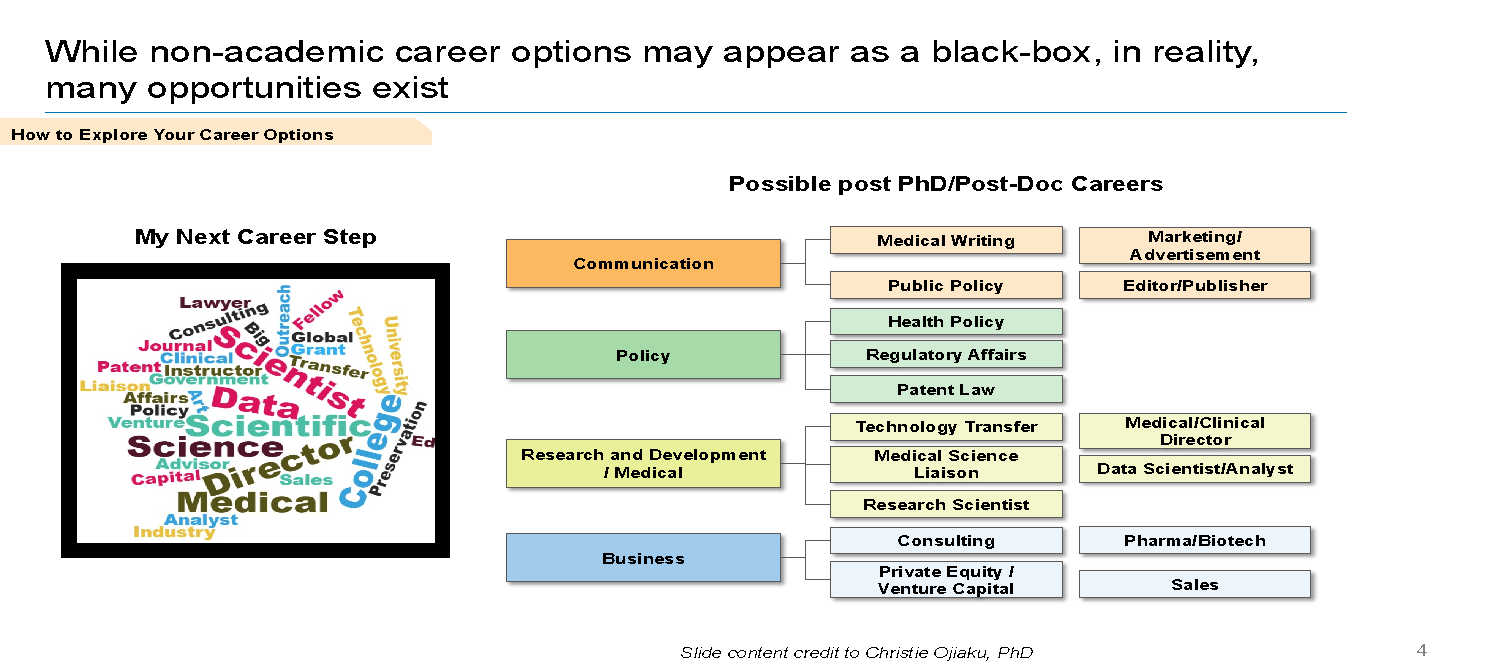

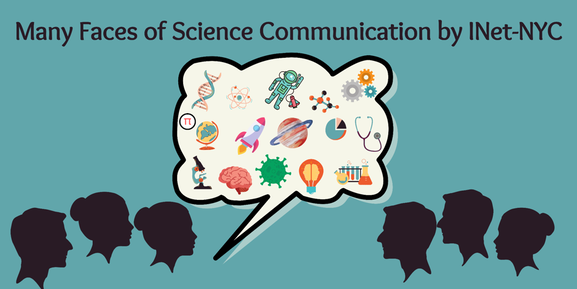

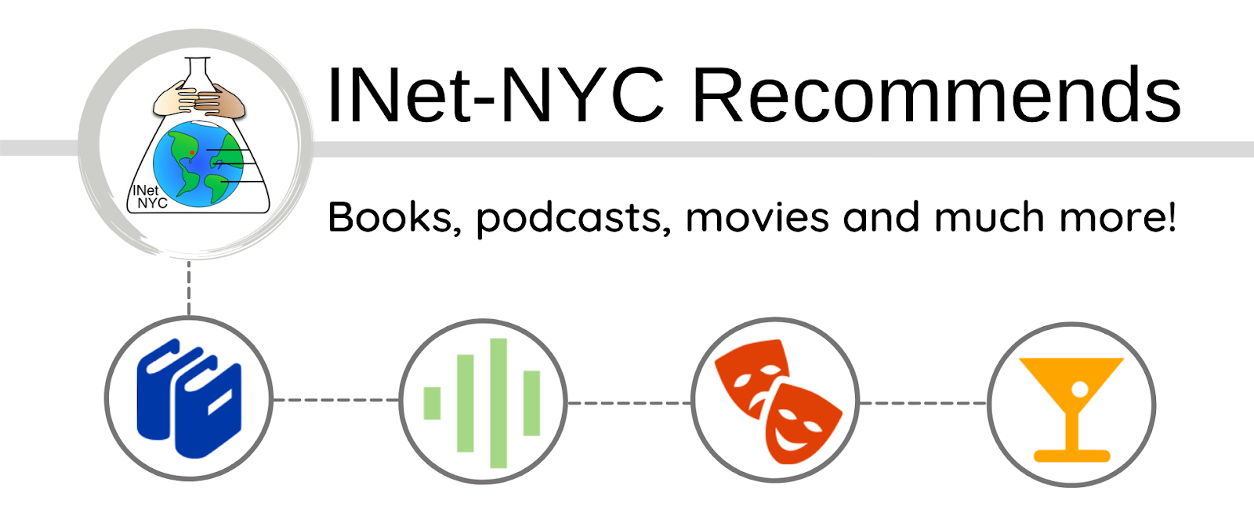
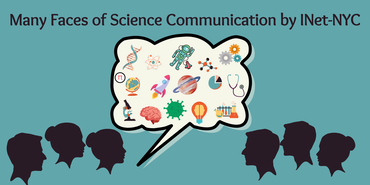
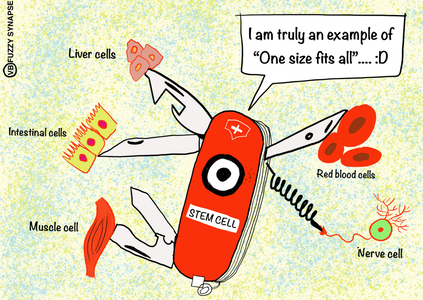
 RSS Feed
RSS Feed